- It includes all eukaryotic chlorophyll-containing organisms commonly called plants.
- A few members are partially heterotrophic such as the insectivorous plants or parasites.
- Bladderwort and Venus fly trap are examples of insectivorous plants and Cuscuta is a parasite.
- cell wall mainly made of cellulose.
Plantae includes algae, bryophytes, pteridophytes, gymnosperms and angiosperms.
•Life cycle of plants has two distinct phases:-
(i) Diploid sporophyte
(ii)Haploid gametophytic
- Both phases alternate with each other.
- The lengths of the haploid and diploid phases, and whether these phases are free– living or dependent on others, vary among different groups in plants. This phenomenon is called alternation of generation.
▪ Classification within Angiosperms
Artificial System (Earliest system)
It use only gross superficial morphological characters such as habit, colour, number and shape of leaves, etc. They were based mainly on vegetative characters or on the androecium structure (system given by Linnaeus).
Demerit of Artificial system
- they separated the closely related species since they were based on a few characteristics.
- the artificial systems gave equal weightage to vegetative and sexual characteristics (we know that often the vegetative characters are more easily affected by environment).
• Natural classification system (Bentham and Hooker classification)
- based on natural affinities among the organisms and consider not only the external features, but also internal features, like ultrastructure, anatomy, embryology and phytochemistry.
given by George Bentham and Joseph Dalton Hooker.
Phylogenetic classification systems
- based on evolutionary relationships between the various organisms.
- This assumes that organisms belonging to the same taxa have a common ancestor.
Other classification when there is no supporting fossil evidence
Numerical Taxonomy
- carried out using computers is based on all observable characteristics.
- Number and codes are assigned to all the characters and the data are then processed.
- at the same time hundreds of characters can be considered.
- Demerit of Numerical Taxonomy
- each character is given equal importance.
Cytotaxonomy
based on cytological information like chromosome number, structure, behaviour and
Chemotaxonomy
uses the chemical constituents of the plant to resolve confusions.
Algae
Algae are chlorophyll-bearing, simple, thalloid, autotrophic and largely aquatic (both fresh water and marine) organisms. (NEET 2012)
- other habitats: moist stones, soils and wood.
association with fungi (lichen) and animals (e.g., on sloth bear )
form and size
highly variable
colonial - Volvox (NEET 2017
- filamentous - Ulothrix and Spirogyra.
- massive plant bodies - kelps (marine)
Reproduction
(i) vegetative (ii) asexual (iii) sexual
(i) Vegetative
fragmentation - each fragment develops into a thallus
(ii) Asexual
- by different types of spores (most common being the zoospores).
- Zoospores are flagellated (motile) and on germination gives rise to new plants.
(iii) Sexual (fusion of two gametes). (NEET 2013,2014,2015)
- Isogamous = gametes can be flagellated and similar in size (as in Ulothrix) or non-flagellated (non-motile) but similar in size (as in Spirogyra).
- Anisogamous = Fusion of two gametes dissimilar in size, as in species of Eudorina.
- Oogamous = Fusion between one large, nonmotile (static) female gamete and a smaller, motile male gamete is termed oogamous, e.g., Volvox, Fucus.
Uses of Algae
- half of the total carbon dioxide fixation on earth is carried out by algae through photosynthesis.
- they increase the level of dissolved oxygen in their immediate environment. (NEET 2016)
- primary producers of energy-rich compounds which form the basis of the food cycles of all aquatic animals.
Food
- Porphyra, Laminaria and Sargassum are among the 70 species of marine algae used as food.
- Agar, one of the commercial products obtained from Gelidium and Gracilaria are used to grow microbes and in preparations of ice-creams and jellies.
- Chlorella a unicellular alga rich in proteins is used as food supplement even by space travellers.
- hydrocolloids (water holding substances), e.g., algin (brown algae) and carrageen (red algae) [marine forms] . (NEET 2015,2016,2018)
Divided into three main classes
1. Chlorophyceae 2. Phaeophyceae 3. Rhodophyceae
- Chlorophyceae (Green Algae)
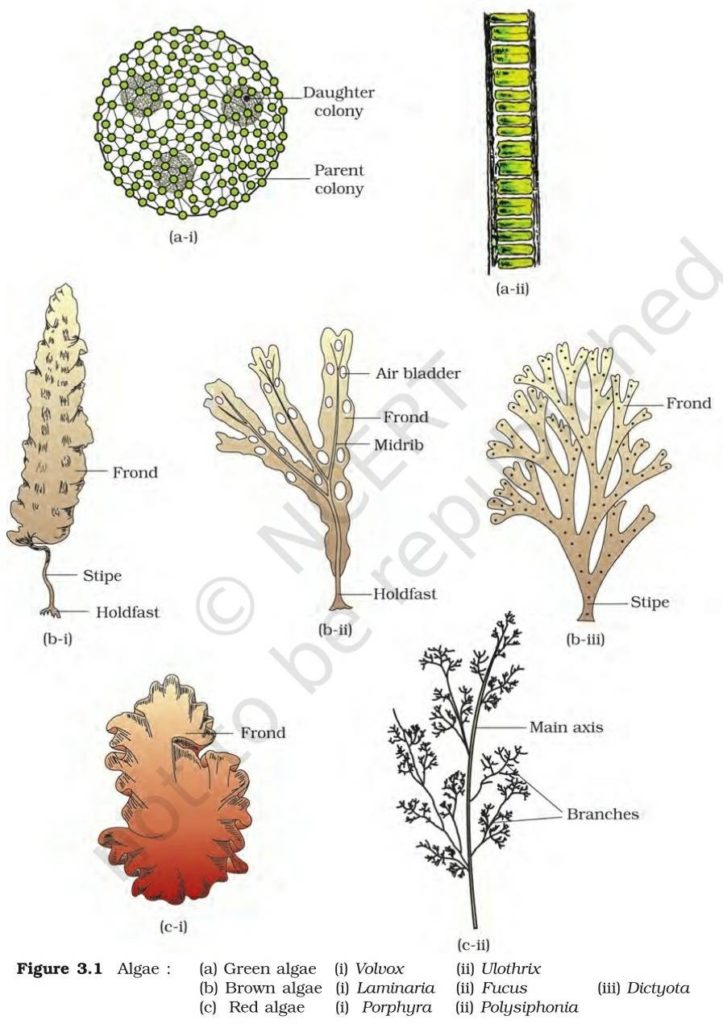
- Body may be unicellular, colonial or filamentous.
- Usually grass green due to the dominance of pigments chlorophyll a and b.
- Pigments are localised in definite chloroplasts.
- Chloroplasts may be discoid, plate-like, reticulate, cup- shaped, spiral or ribbon-shaped in different species.
- Most have storage bodies called pyrenoids located in the chloroplasts.
- Pyrenoids contain protein besides starch.
- Some store food in the form of oil droplets.
- Cell wall made of an inner layer of cellulose and an outer layer of pectose.
- Reproduction
- Vegetative - by fragmentation or by formation of different types of spores.
- Asexual - by flagellated zoospores produced in zoosporangia. iii - Sexual - it may be isogamous, anisogamous or oogamous.
- Example - Chlamydomonas, Volvox, Ulothrix, Spirogyra and Chara .
2. Phaeophyceae (Brown Algae)
- Found primarily in marine habitats.
- Size and form
- simple branched
- filamentous forms (Ectocarpus)
- profusely branched forms - kelps (may reach a height of 100 metres).
- They possess chlorophyll a, c, carotenoids and xanthophylls.
- Vary in colour from olive green to various shades of brown depending upon the amount of the xanthophyll pigment, fucoxanthin .
- Food is stored as complex carbohydrates, which may be in the form of laminarin or mannitol. (NEET 2009,2015)
- The vegetative cells have a cellulosic wall usually covered on the outside by a gelatinous coating of algin.
- The protoplast contains plastids, a centrally located vacuole and nucleus.
- The plant body
- attached to the substratum by a holdfast,
- has a stalk, the stipe
- leaf like photosynthetic organ – the frond.
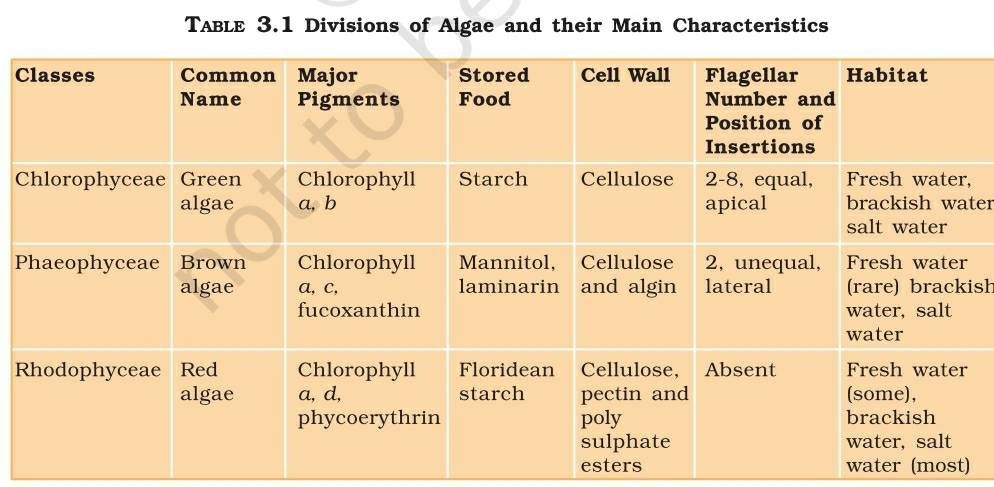
Reproduction
i. - Vegetative - by fragmentation.
ii- Asexual - by biflagellate zoospores that are pear-shaped and have two unequal laterally attached flagella. (NEET 2015,2018)
iii- Sexual - may be isogamous, anisogamous or oogamous.
- Union of gametes may take place in water or within the oogonium (oogamous species).
- The gametes are pyriform (pear-shaped) and bear two laterally attached flagella.
- Example - Ectocarpus, Dictyota, Laminaria, Sargassum and Fucus.
3. Rhodophyceae
- predominance of the red pigment, r-phycoerythrin in their body.
- Mostly marine with greater concentrations found in the warmer areas.
- Occur in both well-lighted regions close to the surface of water and also at great depths in oceans where relatively little light penetrates.
- Red thalli of most of the red algae are multicellular.
- Food is stored as floridean starch which is very similar to amylopectin and glycogen in structure.
Reproduction:-
(i) Vegetative - by fragmentation
(ii) Asexually - by non-motile spores
- Sexually - by non-motile gametes. (oogamous and accompanied by complex post fertilisation developments)
- Example - Polysiphonia, Porphyra, Gracilaria and Gelidium. (NEET 2018) Table 3.1 Flagella no.
Bryophytes

- 'Amphibians of the plant kingdom '
- these plants can live in soil but are dependent on water for sexual reproduction.
- They play an important role in plant succession on bare rocks/soil. (NEET 2015,16)
- include the various mosses and liverworts that are found commonly growing in moist shaded areas in the hills usually occur in damp, humid and shaded localities.
- The plant body is thallus-like and prostrate or erect, and attached to the substratum by unicellular or multicellular rhizoids.
- lack true roots, stem or leaves but possess root-like, leaf-like or stem-like structures.
- The main plant body is haploid. It produces gametes, hence is called a gametophyte.
- Sex organs (multicellular).
- male sex- antheridium (produce biflagellate antherozoids) The
- female sex - archegonium (flask-shaped and produces a single egg).
- The antherozoids are released into water where they come in contact with archegonium (to produce the zygote). (NEET 2013)
- Zygotes do not undergo reduction division immediately. They produce a multicellular body called a sporophyte.
The sporophyte is not free-living but attached to the photosynthetic gametophyte and derives nourishment from it.
- Some cells of the sporophyte undergo reduction division to produce gametophyte.
Use of Bryophytes
- generally little economic importance
- some mosses provide food for herbaceous mammals, birds and other animals.
- Species of Sphagnum, a moss, provide peat that have long been used as fuel, and as packing material for trans-shipment of living material because of their capacity to hold water. (NEET 2014)
- Mosses along with lichens are the first organisms to colonise rocks and hence, are of great ecological importance.
- They decompose rocks making the substrate suitable for the growth of higher plants.
- mosses form dense mats on the soil, they reduce the impact of falling rain and prevent soil erosion.
Types of Bryophytes
1. Liverworts 2. Mosses
Liverworts
- Grow usually in moist, shady habitats such as banks of streams, marshy ground, damp soil, bark of trees and deep in the woods.
- Plant body is thalloid, e.g., Marchantia.
- Thallus is dorsiventral and closely appressed to the substrate. The leafy members have tiny leaf-like appendages in two rows on the stem-like structures.
Asexual reproduction
- - by fragmentation of thalli,
- - by the formation of specialised structures called gemmae (sing. gemma).
- Gemmae are green, multicellular, asexual buds, which develop in small receptacles called gemma cups located on the thalli. (NEET 2018)
- gemmae become detached from the parent body and germinate to form new individuals.
Sexual Reproduction
- Male and female sex organs are produced either on the same or on different thalli.
- The sporophyte is differentiated into a foot, seta and capsule.
- After meiosis, spores are produced within the capsule and germinate to form free-living gametophytes.
Mosses
- Predominant stage is gametophyte consists of two stages.
- protonema stage, which develops directly from a spore. It is a creeping, green, branched and frequently filamentous stage.
- leafy stage, which develops from the secondary protonema as a lateral bud consist of upright, slender axes bearing spirally arranged leaves.
- attached to the soil through multicellular and branched rhizoids.
Reproduction
- Vegetative - by fragmentation and budding in the secondary protonema.
2.Sexual - antheridia and archegonia are produced at the apex of the leafy shoots.
- Zygote develops into a sporophyte, consisting of a foot, seta and capsule.
- The sporophyte in mosses is more elaborate than that in liverworts.
- Spores are formed after meiosis. (an elaborate mechanism of spore dispersal).
- Example - Funaria, Polytrichum and Sphagnum.
Pteridophytes

- Include horsetails and ferns. (NEET 2018)
- Used for medicinal purposes and as soil-binders.
- frequently grown as ornamentals.
- first terrestrial plants to possess vascular tissues – xylem and phloem.
- found in cool, damp, shady places though some may flourish well in sandy-soil conditions.
- main plant body is a sporophyte which is differentiated into true root, stem and leaves (possess vascular tissues).
- Leaves are small (microphylls) as in Selaginella or large (macrophylls) as in ferns.
- The sporophytes bear sporangia that are subtended by leaf
like appendages called sporophylls.
- In some sporophylls may form distinct compact structures called strobili or cones (Selaginella, Equisetum).
- Sporangia produce spores by meiosis in spore mother cells.
- Spores germinate to give rise to inconspicuous, small but multicellular, free-living, mostly photosynthetic thalloid gametophytes called prothallus.
- Gametophytes require cool, damp, shady places to grow.
- Need water for fertilisation.
- limited and restricted to narrow geographical regions.
- Gametophytes bear antheridia and archegonia.
- Water is required for transfer of antherozoids – the male gametes released from the antheridia, to the mouth of archegonium. Fusion to form zygote. (NEET 2016)
- Zygote produces a multicellular well-differentiated sporophyte which is the dominant phase of the pteridophytes.
- Mostly the spores are of similar kinds; such plants are called homosporous.
- Genera like Selaginella and Salvinia which produce two kinds of spores, macro (large) and micro (small) spores, are known as heterosporous. (NEET 2018)
- Female gametophytes in these plants are retained on the parent sporophytes for variable periods. (NEET 2019)
- The development of the zygotes into young embryos take place within the female gametophytes. This event is a precursor to the seed habit considered an important step in evolution. (NEET 2011)
• Four classes of Pteridophytes
i. Psilopsida (Psilotum) ii. Lycopsida (Selaginella, Lycopodium)
iii. Sphenopsida (Equisetum) iv. Pteropsida (Dryopteris, Pteris, Adiantum). (NEET 2012)
Gymnosperms
- gymnosperms (gymnos : naked, sperma : seeds)
- the ovules are not enclosed by any ovary wall and remain exposed, both before and after fertilisation. (seeds are not covered) . (NEET 2018)
- Include medium-sized trees or tall trees and shrubs.
- Giant redwood tree Sequoia is one of the tallest tree species. (NEET 2016)• Roots
- The roots are generally tap roots.
- Some genera have fungal association in the form of mycorrhiza (Pinus) responsible for seed germination because fungi provide nutrition essential for germination. (NEET 2019)
- Some others (Cycas) small specialised roots called coralloid roots are associated with Nitrogen fixing cyanobacteria.
• Stem
Unbranched (Cycas) or branched (Pinus, Cedrus). (NEET 2012,2018)
• Leaves
- Simple or compound.
- In Cycas the pinnate leaves persist for a few years.
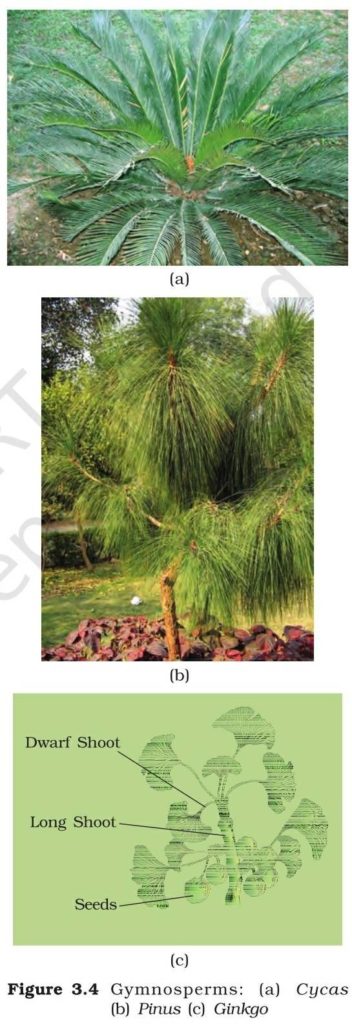
- The leaves in gymnosperms are well-adapted to withstand extremes of temperature, humidity and wind.
- In conifers, the needle-like leaves reduce the surface area. Their thick cuticle and sunken stomata also help to reduce water loss. (NEET 2016)
- The gymnosperms are heterosporous( produce haploid microspores and megaspores).
- Spores are produced in sporangia (on sporophylls) are arranged spirally along an axis to form lax or compact strobili or cones.
- Strobili bearing microsporophylls and microsporangia are called microsporangiate or male strobili. (develop into a male gametophytic which is highly reduced and is confined to only a limited number of cells).
- Reduced gametophyte is pollen grain. In Pinus these pollen grains are like wings. (NEET 2018)
- The cones bearing megasporophylls with ovules or megasporangia are called macrosporangiate or female strobili.
- The male or female cones or strobili may be borne on the same tree (Pinus).Monoecious
- In cycas male cones and megasporophylls are borne on different trees. Dioecious
- Megaspore mother cell from one of the cells of the nucellus.
- Nucellus is protected by envelopes and the composite structure is called an ovule.
- The ovules are borne on megasporophylls which may be clustered to form the female cones.
- The megaspore mother cell divides meiotically to form four megaspores.
- One of the megaspores enclosed within the megasporangium develops into a multicellular female gametophyte that bears two or more archegonia or female sex organs.
- Multicellular female gametophyte is retained within megasporangium.
- Male and the female gametophytes do not have an independent free-living existence.
- They remain within the sporangia retained on the sporophytes. (NEET 2011)
- The pollen grain is released from the microsporangium carried in air currents and come in contact with the opening of the ovules borne on megasporophylls.
- The pollen tube carrying the male gametes grows towards archegonia in the ovules and discharge their contents near the mouth of the archegonia.
Zygote develops into an embryo and the ovules into seeds
Angiosperms
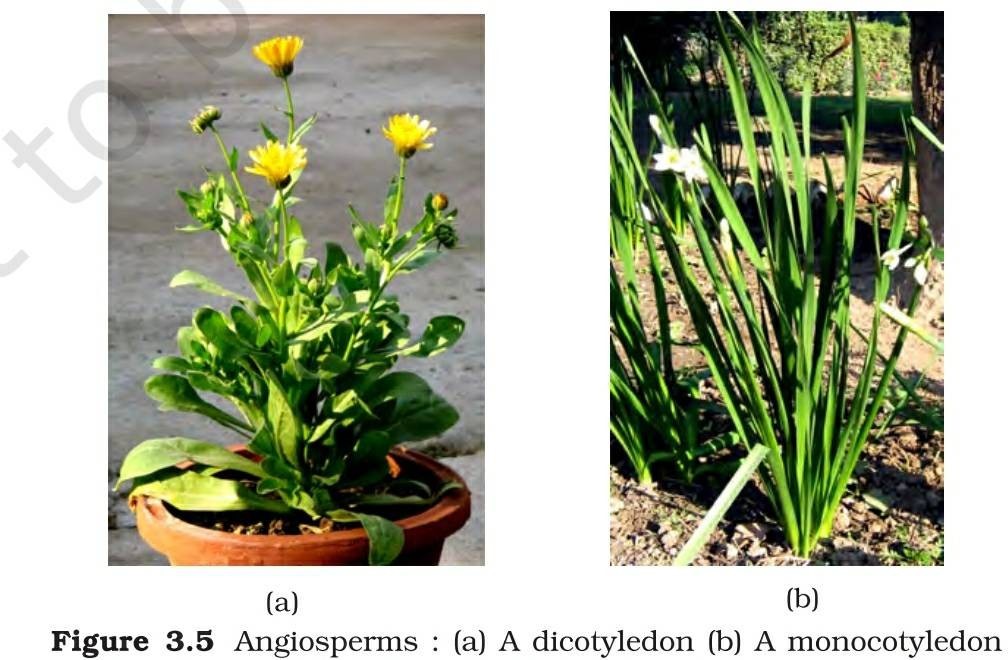
- specialised structures called flowers.
- Seeds are enclosed in fruits.
- Large group of plants occurring in wide range of habitats.
- Size from the smallest Wolffia to tall trees of Eucalyptus (over 100 metres).
- Provide us with food, fodder, fuel, medicines and several other commercially important products.
- Divided into two classes : (i) dicotyledons (ii) monocotyledons
(i) Dicotyledons
- seeds having two cotyledons,
- reticulate venations in leaves
- tetramerous or pentamerous flowers, i.e., having four or five members in each floral whorls.
(ii) Monocotyledons

- single cotyledonous seeds,
- parallel venation in leaves,
- trimerous flowers having three members in each floral whorls
- More Details in Sexual Reproduction of Flowering plants (class 12th)
PLANT LIFE CYCLES AND ALTERNATION OF GENERATIONS
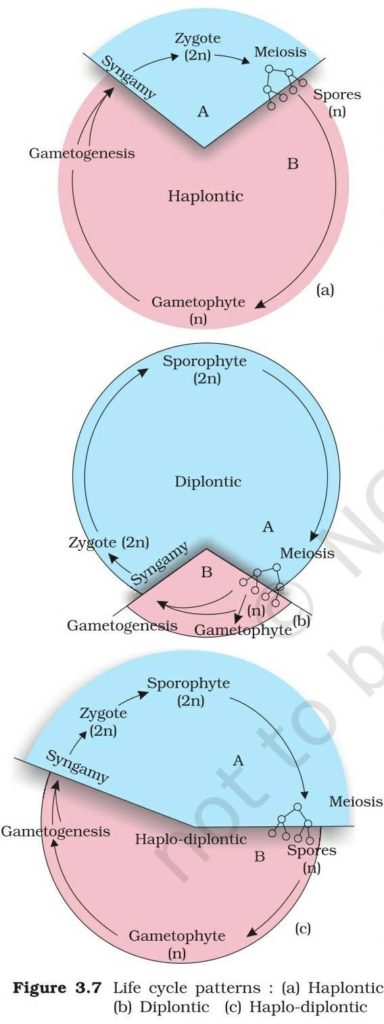
Ploidy Zygote (2n)
Sporophyte (2n) Spores (n) Gametophyte (n)
- In plants, both haploid and diploid cells can divide by mitosis.
- Haploid plant body produces gametes by mitosis.(represents a gametophyte).
- Zygote also divides by mitosis to produce a diploid sporophytic plant body.
- Haploid spores are produced by sporophyte by meiosis.
- Three types of Life Cycles
1. Haplontic 2. Diplontic 3. Haplo-diplontic
Sporophyte produce Gametophyte and Gametophyte produce Sporophyte
- Haplontic
- Sporophytic generation is represented only by the one-celled zygote.
- no free-living sporophytes.
- Meiosis in the zygote results in the formation of haploid spores. (NEET 2017)
- The haploid spores divide mitotically and form the gametophyte.
- The dominant, photosynthetic phase in such plants is the free-living gametophyte.
- Example Many algae such as Volvox, Spirogyra and some species of Chlamydomonas represent this pattern. (NEET 2009,2017)
2.Diplontic
- Diploid sporophyte is the dominant, photosynthetic, independent phase of the plant.
- The gametophytic phase is represented by the single to few-celled haploid gametophyte.
- the gametophytic phase is few to multi-celled. (NEET 2009,2011,2014,2015)
- Example An alga, Fucus sp., represents this pattern. In addition, all seed bearing plants i.e., gymnosperms and angiosperms.
3. Haplo-diplontic
- Bryophytes and pteridophytes, interestingly, exhibit an intermediate condition (Haplo-diplontic); both phases are multicellular. (NEET 2011)
In Bryophytes
- A dominant, independent, photosynthetic, thalloid or erect phase is represented by a haploid gametophyte.
- Shortlived multicelluler sporophyte totally or partially dependent on the gametophyte for its anchorage and nutrition.
In Pteridophytes
- The diploid sporophyte is represented by a dominant, independent, photosynthetic, vascular plant body.
- Multicellular, saprophytic/autotrophic, independent but short-lived haploid gametophyte. (NEET 2017)
- Algae Ectocarpus, Polysiphonia, kelps are haplo-diplontic. Fucus, an alga is diplontic.
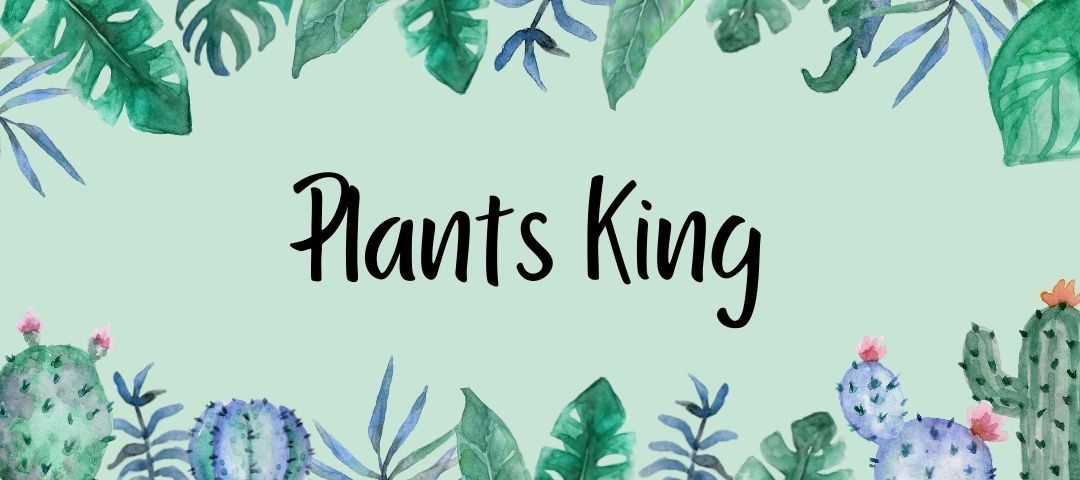

… [Trackback]
[…] Info to that Topic: eklabhyaclasses.com/blog/plant-kingdom/ […]
… [Trackback]
[…] Read More Information here to that Topic: eklabhyaclasses.com/blog/plant-kingdom/ […]
… [Trackback]
[…] Info to that Topic: eklabhyaclasses.com/blog/plant-kingdom/ […]
… [Trackback]
[…] Here you can find 42537 additional Info on that Topic: eklabhyaclasses.com/blog/plant-kingdom/ […]